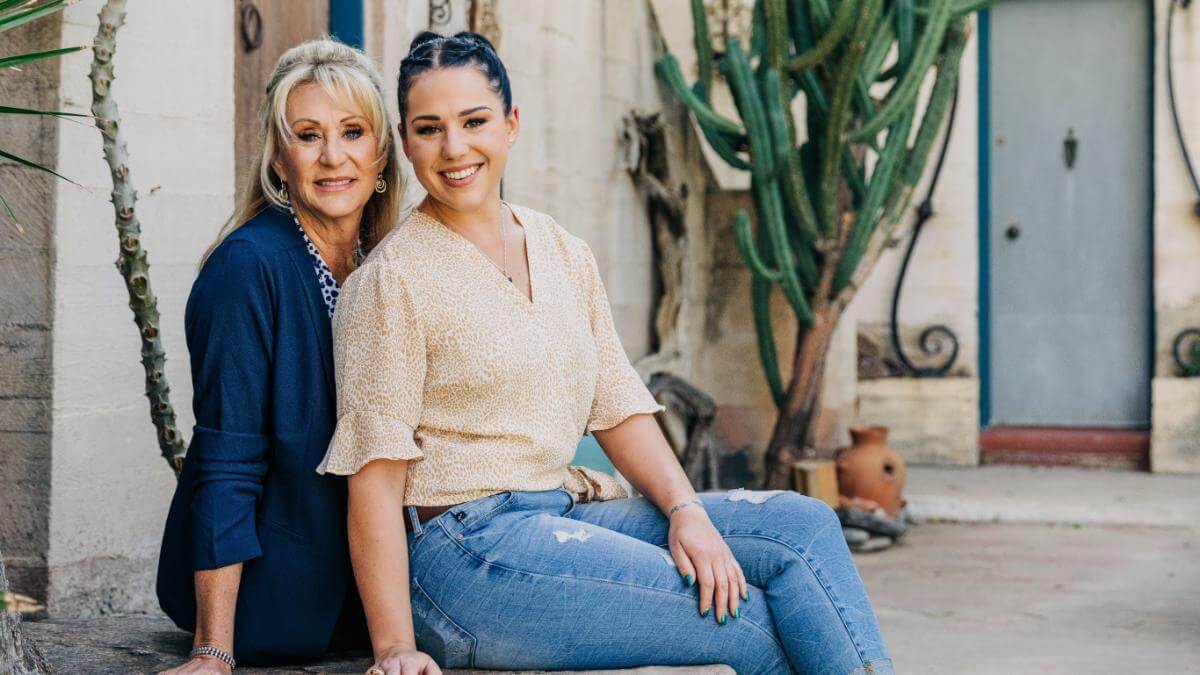
Home » Gina & Kaycee Klang | Mon Amie Briards

Gina & Kaycee Klang
1. Hello! We are Mon Amie Briards. I, Gina Klang, have been breeding Briards for the last 27 years in sunny Thousand Palms, California. My daughter, KayCee Klang, picked up a show lead at the young age of five years old and has been by my side working with the dogs ever since. Together we have bred, raised, and shown multiple Best in Show, Reserve Best in Show, and Best in Specialty Show dogs, and have finished nearly 75 Champions.
2. The two most recognized hallmarks of our breed are the double dewclaws on each rear leg and the “J” or crochet tail. Both are important because they are the identifying traits of the breed.
3. For us, we generally have a wait list for puppies, and a lot of buyers are on their second and third puppies; families of multiple generations come back for their own companion. We selectively breed to improve traits on our own dogs, so we do not have more than one or two litters per year. We generally have puppy buyers before we actually have puppies on the ground. So, yes, I’d say there are enough puppy homes to support breeding a litter this year.
4. I’d say with the age we live in, where social media is at its most prevalent, it allows for us breeders to actually see more of each other’s dogs and breeding stock. We live on the West Coast where we hardly get to see other Briards outside of our own home. With an already very small gene pool, it helps to be able to see the dogs on the East Coast or even overseas. It gives us a more diverse pedigree, which allows us to be able to create or come close to the ideal Briard.
5. We have noticed a big change in the younger generation. It seems more people are being made aware of some of these rare breeds. My daughter often remarks on how the AKC’s (American Kennel Club) shorts, highlighting different breeds, are making their appearance on TikTok or even Instagram.
6. It does seem to me that there are often too many shows on any given weekend. Of course, that is fantastic for the different clubs and the exhibitors in that area. But it is concerning that with so many shows, dogs and handlers can avoid one another. It feels like we are diluting the competition. Competition pushes us breeders to bring our best and breed better dogs.
In regard to our breed, Briards, the dogs have become too long and too low, and they carry an excessive coat. The breed is supposed to be square or “slightly” off-square. Often there are no square dogs in the ring. The dogs are too long and lack leg. Coat is also something that has become a trend and is concerning to me. Let’s be honest, there is no way that the breed could do a day’s work with all that hair. The coat can also conceal many faults, so judges really need to get their hands in there and go over the dogs. Feel for structure, not just the beauty queen.
7. After having a daughter who competed in Junior Showmanship, it’s been so gratifying seeing all the praise and acknowledgment these young kids have been receiving as of late. They are the future of the sport! I also believe there is so much knowledge within the longtime handlers that these young kids should take the time to learn. Additionally, I would say that, hands down, the biggest improvement that we have seen, and breeders have worked on generationally, is temperament. Briards have come such a long way from the dogs of years past.